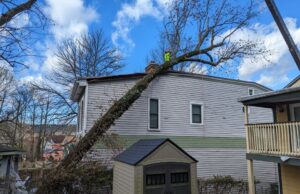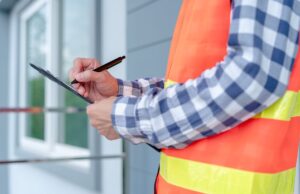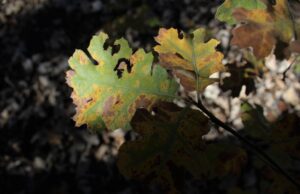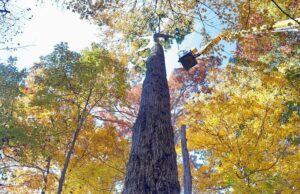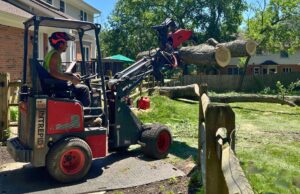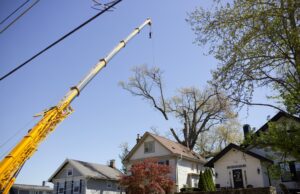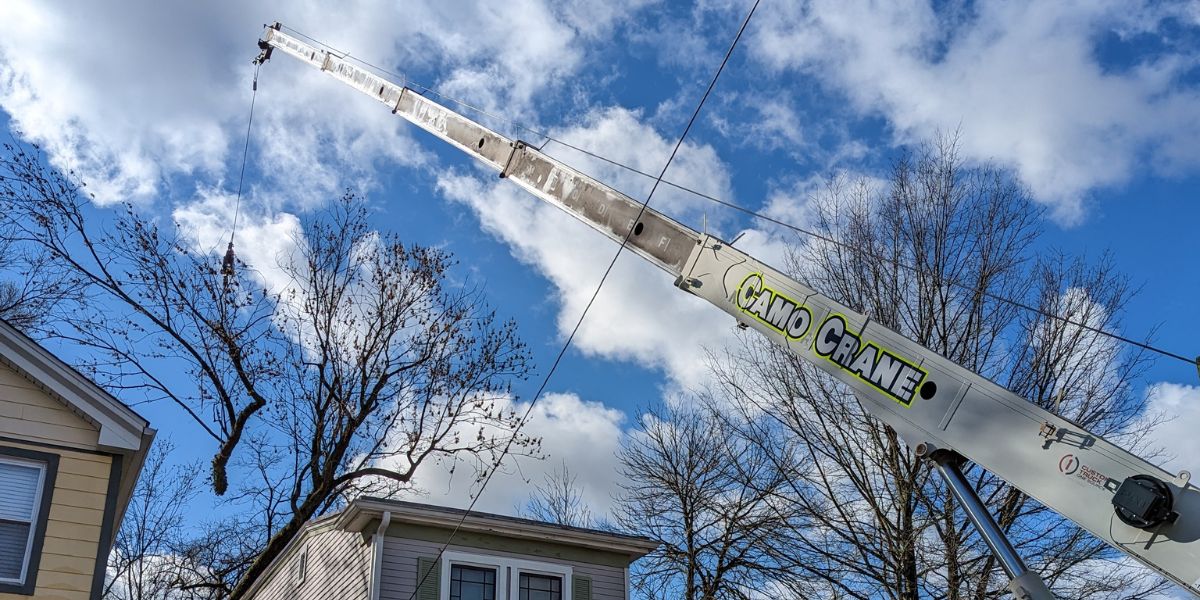As a homeowner, have you ever looked at your tree and wondered, “Is my tree dangerous?” It’s a critical question that many residents in Cincinnati and Northern Kentucky face. Trees bring immense beauty and shade to our properties, but they can also pose significant risks if not properly maintained.
In this article, we’ll explore the key signs that indicate a tree in your yard might be more than just a source of beauty – it could be a hidden hazard. From understanding the subtleties of tree decay to identifying structural vulnerabilities, we’ll provide you with the essential knowledge to assess the safety of your trees and protect your home and loved ones.
Key Takeaways
- Dangerous trees pose a number of risks, such as property damage, utility interference, injury potential, and ecological impact.
- Visible signs of decay, such as fungal growth, cavities in the trunk, and bark problems are clear indicators of potential tree hazards.
- It’s important to identify early signs of structural weakness, such as leaning trees, cracks and splits, weak branch unions, overextended branches, and previous damage, so you can mitigate the risks of a hazardous tree.
- Keep watch for changes in environmental conditions, such as soil disruption, waterlogging, and root exposure, that can significantly impact tree health and stability.
- If you notice any signs that your tree is dangerous, call a certified arborist to perform a tree hazard assessment and recommend that best course of action to keep you and your property safe.
Recognizing the Tree Risks in Our Backyards
The trees that grace our Cincinnati and Northern Kentucky landscapes are more than just natural decorations; they are integral to our environment and quality of life. However, when a tree becomes hazardous, it poses significant risks that can’t be overlooked. Understanding these dangers is the first step toward mitigating them.
Sometimes, the danger a tree poses isn’t immediately apparent. For example, rotten roots or a compromised structure can make a tree unstable, leading to sudden and unexpected falls. Other times, it’s instantly obvious that something is wrong with your tree.
The most common risks posed by a dangerous tree include:
- Structural Threats: Hazardous trees can cause substantial damage to homes, buildings, and other structures. For example, a weak or diseased tree might drop branches or fall over, leading to costly repairs and property damage.
- Interference with Utilities: Trees with overgrown or unstable branches can interfere with power lines, potentially causing power outages or electrical hazards, especially during storms.
- Injury: Falling branches or collapsing trees can pose severe safety risks to individuals, especially in residential areas and public spaces like parks and sidewalks.
- Disease: A diseased or dying tree can affect the local ecosystem. It may spread diseases to surrounding healthy trees or disrupt local wildlife habitats.
These risks make it clear that regular tree assessments and maintenance are an important part of home ownership. But how can you tell if a tree poses an unacceptable risk to your home and family? Keep reading to learn the signs of a hazardous tree!
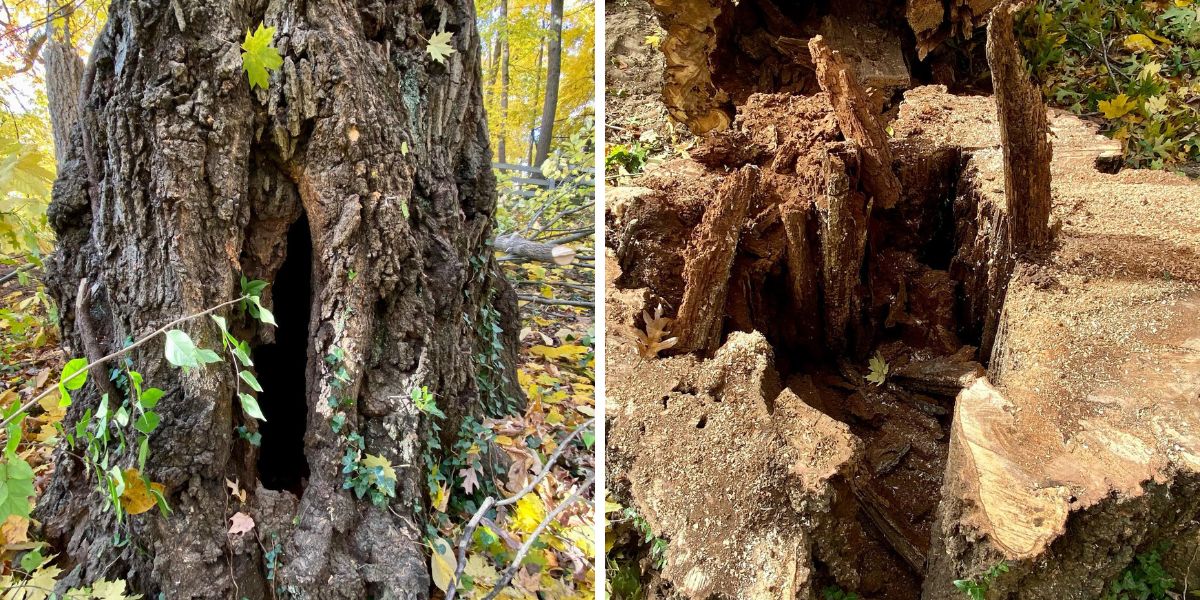
This tree, removed by Lefke Tree Experts, was showing signs of decay. As you can see by the photo on the right, the inside of the tree was hollow.
Is Your Tree Dangerous? Look For These Signs
In our experience serving the Cincinnati and Northern Kentucky area, we’ve identified three key signs that a tree might be dangerous:
- visible signs of decay and damage,
- indicators of structural weakness, and
- changes in environmental conditions.
Early detection of these signs can help prevent potential disasters and ensure the safety and health of your trees.
Visible Signs of Decay
Not all signs of a hazardous tree are easily visible. However, the signs below are usually easy to recognize. If you notice any of these issues with your trees in the greater Cincinnati region, contact a tree service professional like Lefke Tree Experts for a thorough assessment. Timely intervention can prevent property damage and ensure the safety of your home and neighborhood.
Fungal Growth
Fungi, like mushrooms or conks, growing at the tree’s base or on its trunk, are often telltale signs of internal decay. These growths suggest that the tree is rotting from the inside, weakening its structural integrity.
Different types of fungal growth can indicate various problems. For instance, bracket fungi often grow on dead wood, signaling that parts of the tree might be dying.
Cavities in the Trunk
Cavities or hollow areas in a tree’s trunk are a significant concern that signifies areas of weakness. They result from prolonged decay, leaving the tree structurally compromised.
The size and location of the cavity can influence the extent of the risk. Large cavities or those located at critical points (like where branches connect to the trunk) are particularly hazardous.
Bark Problems
Healthy bark is crucial for a tree’s well-being, acting as a protective layer. Changes in the bark’s condition can be early indicators of deeper issues.
Look for signs like missing pieces of bark, bark that easily crumbles away, or areas where the bark has become loose. These symptoms can indicate underlying decay or disease.
Root Issues
Roots that are visibly damaged or decaying can compromise a tree’s stability. Noticeable upheaval or changes in the soil around the tree base can be a sign of root problems.
Signs of Pest Infestation
Insects and other pests can weaken trees, making them more susceptible to diseases and structural damage. Some pests, like the Emerald Ash Borer, can cause rapid decline and death in trees, demanding quick intervention.
Look for small holes in the bark, often accompanied by sawdust-like frass, as these are indicators of boring insects like beetles.
Uneven or excessive leaf damage can also be a sign of insect infestation. Look for chewed leaves, discoloration, or curling.
Dead or Hanging Branches
Branches that are dead or dying, lacking leaves, or showing brittle bark can fall without warning, posing a risk to property and personal safety. Regularly check for branches that no longer produce leaves or have a different color or texture than healthy branches.
Leaf Discoloration and Loss
Leaves that change color out of season, drop prematurely, or appear stunted can be signs of disease or environmental stress affecting the tree. Look for uneven leaf loss or discoloration, especially if it’s only affecting one part of the tree, at it can indicate localized problems.
Sudden Changes in Appearance
Sudden changes in a tree’s appearance, such as rapid leaf loss, sudden leaning, or an increase in fallen branches, can signal an urgent problem. These kinds of quick changes often require immediate attention to prevent potential hazards or irreversible damage.
Unusual Growth or Bulges
Swellings or bulges on the trunk or branches can indicate areas where the tree is trying to heal from an injury or fight off an infection. While some growths like galls and burls may not be harmful, they should be monitored as they can sometimes weaken the structural integrity of the tree.

While some trees naturally lean as they grow, if you notice a tree is leaning more than it used to, schedule a tree inspection as soon as possible.
Structural Problems
Structural integrity is fundamental to a tree’s safety. Below are signs of structural weaknesses that you should be on the lookout for. If you notice any of these issues, consult with a tree care professional like Lefke Tree Experts to assess you trees and mitigate any risks.
Leaning Trees
Some trees naturally grow at an angle and are generally stable. However, a sudden or recent leaning tree can indicate a problem, particularly after heavy storms or soil erosion. Look at the degree of lean; a significant lean towards a structure, walkway, or frequented area increases risk. And check for the presence of exposed or lifting roots as these can mean the tree is likely to topple.
Cracks and Splits
Vertical or horizontal cracks in the tree trunk or larger branches can indicate internal decay, while deep splits that extend into the wood usually signal structural failure that can lead to a tree’s collapse. While some cracks might be superficial, others can suggest deeper issues within the trunk, compromising the tree’s strength.
Weak Branch Unions
Branches that form sharp angles with the trunk are often weaker. Look for cracks or splits where branches join the trunk, as these are potential breakpoints. In some cases, bark can get embedded in the union, preventing strong attachment and increasing the likelihood of a branch failing.
Overextended Branches
Branches that grow too long and heavy on one side can create an imbalance, making the tree more susceptible to breaking, especially under heavy winds or snow. Proper pruning can help redistribute weight and reduce the risk of overextended branches.
Previous Damage
Trees that have sustained previous damage, whether from storms, improper pruning, or other factors, may have compromised structures that aren’t immediately visible. Dead or dying branches, indicated by a lack of leaves or brittle wood, can fall unexpectedly. Branches hanging or partially detached are a clear danger, especially in storm-prone areas. We recommend that you regularly check trees with a history of damage for signs of worsening conditions.
Changes in the Environmental Conditions
Environmental factors play a significant role in the health and stability of trees. Recognizing how environmental conditions affect your trees is essential for maintaining their health and safety. If you notice any concerning changes, consult with tree care experts like Lefke Tree Experts, who can provide specific advice and interventions suitable for the greater Cincinnati climate and ecosystem.
Soil Disruption
Nearby construction, landscaping alterations, or heavy machinery can compact soil or damage tree roots, affecting tree stability. Look for signs of soil erosion or changes in soil moisture levels, as these can weaken root systems and overall tree health.
Waterlogging and Drainage Issues
Prolonged periods of waterlogged soil can lead to root rot and weaken a tree’s foundation. This is especially important to monitor during the rainy seasons and as winter snow begins to melt. Ensuring proper drainage around trees can prevent waterlogging and protect root health.
Root Exposure and Damage
Exposed roots, either due to soil erosion or physical damage, can indicate a tree’s vulnerability, especially if the roots appear damaged or decayed. Protect your tree’s root zone by avoiding activities that could damage roots, such as digging or heavy traffic near the tree base.
Extreme Weather Events
High winds, lightning, heavy snow, and ice can all cause significant stress and damage to trees. After these events, inspect your trees for any signs of damage or weakness.
Changes in Surrounding Vegetation
Overcrowding or significant changes in nearby vegetation can affect a tree’s access to sunlight, water, and nutrients, impacting its health and stability. Plan landscaping projects carefully and keep watch for invasive plant species that might compete with your trees or introduce new pests and diseases.
Don’t Let Dangerous Trees Threaten Your Home
Whether you’re concerned about a potentially hazardous tree on your property or simply seeking advice on regular tree maintenance, Lefke Tree Experts is here to help. With our deep understanding of local tree species and conditions, combined with our commitment to excellence in tree care, we are your go-to experts for ensuring that your trees remain a safe and vibrant part of our community.
Don’t wait for the warning signs of a dangerous tree to become emergencies. Call Lefke Tree Experts today at 513-325-1783.

